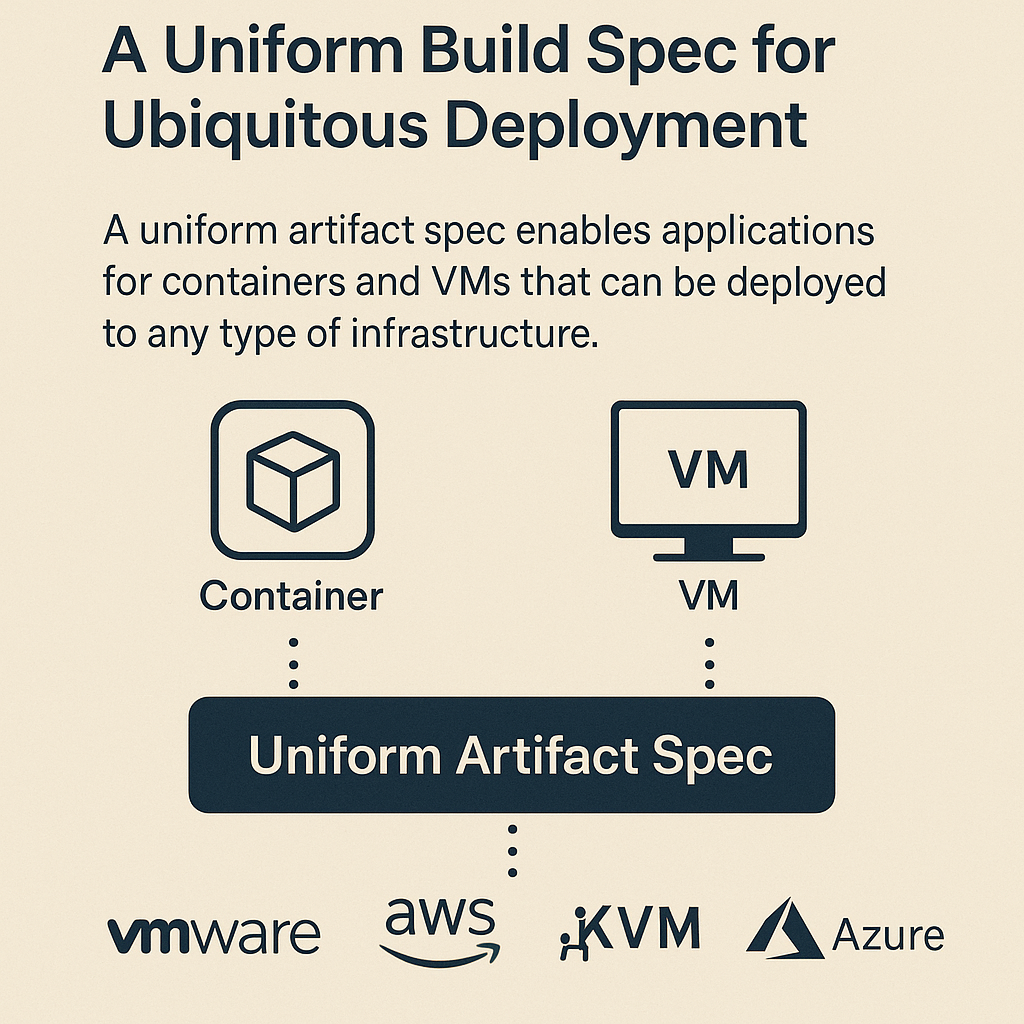We’ve been sold a lot of reinvention in the past decade. Cloud-native architectures, Kubernetes-first everything, throw away the old and start clean. But reality is stubborn: enterprises have decades of investment in legacy systems, sprawling VM fleets, bespoke configurations—and yet they’re under pressure to “modernize” yesterday.
The problem isn’t just technical. It’s economic. You can’t simply deprecate your previous investments, nor should you. What you can do is rethink your build artifacts.
Imagine this: your application—whether it was born in a container or on a traditional VM—adheres to a uniform artifact spec. A spec that’s agnostic to where it will run, whether that’s VMware in your data center, EC2 on AWS, KVM, Azure, or some mix of all the above. One spec, deployable anywhere.
This isn’t a pipe dream. It’s a strategy shift. Instead of refactoring apps to fit new environments, you modernize the build spec of the application. You standardize how it’s packaged and delivered, not what it fundamentally is.
Think of it as decoupling your app’s lifecycle from its runtime environment. Your dev and ops teams define and build a portable artifact—consistent across containers and VMs. Then, at deploy time, you retain the freedom of choice: cloud, on-prem, hybrid, whatever fits your operational strategy this quarter or next.
This opens a few key doors:
Portability without re-architecting. Your Java app from 2015? Build it once to the new spec and deploy it on EC2 today, then migrate it to Azure tomorrow without starting over.
Unified pipeline logic. CI/CD workflows don’t care whether the artifact lands in a container runtime or on a VM image—they’re pushing the same spec through.
Resilience against infrastructure churn. As providers change pricing, capabilities, or SLAs, you keep leverage. No lock-in to one platform’s idiosyncrasies.
A stepping stone to full modernization. Modernizing your build spec now sets the stage for deeper rewrites later, but buys you breathing room to plan it intelligently.
Of course, it’s not magic. Tooling matters. Standards matter. VMware, AWS EC2, KVM, Azure—they all have quirks. But with a disciplined artifact standard—whether that’s OCI-compliant images extended to VMs, or a smart abstraction layer—you bridge the gap between legacy comfort and modern flexibility.
In the end, modernization isn’t a binary flip. It’s a continuum. By anchoring around a uniform build spec, you let your application strategy evolve without burning down what already works.
We don’t always get to start from scratch. But we do get to choose how we adapt. A container or a VM becomes a vehicle instead of a target.
Want to see this in action? Sign-up for Multistax to see it in action.
